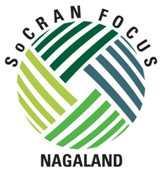The project would focus on eight out of 11 districts namely, Mon, Longleng, Zunheboto,Wokha, Kiphire, Phek, Mokokchung and Kohima. Dimapur district is not being considered under this project as it is largely situated in the plains. Tuensang and Peren districts are also not included as these districts are covered under the World Bank supported North East Rural Livelihoods Programme (NERLP). The eight selected districts have approximately 200,000 rural households. The project would adopt a two stage targeting strategy:
First, the project would adopt geographic targeting by excluding the districts with other
major development projects. The project area in a district will be selected primarily based on
high levels of jhum cultivation with an aim to increase the jhum cycle and at the same time
increase the number of years of jhum cultivation to make a gradual shift towards settled
agriculture.
Second, the project would adopt a social targeting approach by excluding the households
with permanent government jobs. The target group categories would therefore include all
tribal households involved in jhum farming and those unable to take up jhum cultivation on
account of labor shortages and other vulnerable households having persons with disability
and other challenges. Women are the main contributors to both agriculture and livestock
activities and therefore gender would be mainstreamed into the project activities so that
women have access and control over resources both in terms of targeting of project activities
and also their participation in various committees of the project. Similarly, youth would be
engaged in various project activities in Nagaland, the project would select a cluster of
villages in each district depending on the size of the district after excluding the clusters
allocated the proposed JICA project. A cluster approach would be followed in order to ensure
ease of delivery of project services and to promote economies of scale in selected
commodities to facilitate aggregation of both inputs and output for enhancing marketability
to outside markets and also reduction in transaction costs.
The main village clusters selection criteria include:
(i) at least 75% of the villages with high levels of jhum cultivation with more than 60% of the
households undertaking jhum cultivation;
(ii) more than 50% of the jhum cultivating villages have a jhum cycle of eight years and less;
(iii) one cluster per district covering the blocks falling in the cluster in their entirety to
ensure that the cluster boundary is in consonance with the administrative boundaries for
ease of management;
(iv) existence of access roads; and
(v) potential for cultivating high value crops on jhum land. In total the project would cover a
total of 650 villages (69% of all villages in the eight districts with approximately 137,000 rural
households) – covering a population of 685,000 persons. A saturation approach will be
followed within each cluster to ensure comprehensive land use planning for the entire village
landscape.
Village and contact details of the 8 Districts:
Sl. No | District | Number of Villages | District Project Officer | Toll Free Helpline Nos. |
1 | Longleng | 30 | Mr. Mokeya Tep | +91 92338 00312 |
2 | Mokokchung | 57 | Mr. S. Thangpong | +91 9378102739 |
3 | Kohima & Tseminyu | 68 | Mr.Sivi Mor | +91 3707961144 |
4 | Kiphire | 73 | Mr. Kakuto S Chophy | +91 9863626479 |
5 | Phek | 75 | Mr. Sivi Mor | +91 9863980676 |
6 | Mon | 91 | Mr. H. Shou | +91 8132847997 |
7 | Wokha | 98 | Mr. T. Chenithung Tsanglao | +91 9233796367 |
8 | Zunheboto | 150 | Mr. S. Thangpong | +91 6033958725 |


